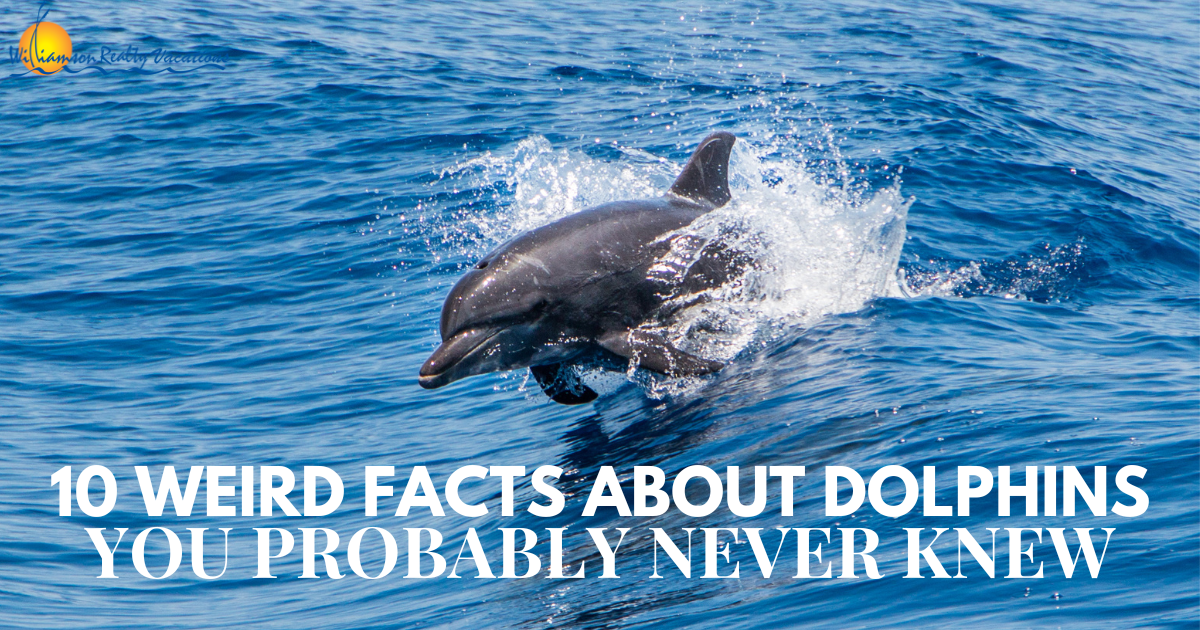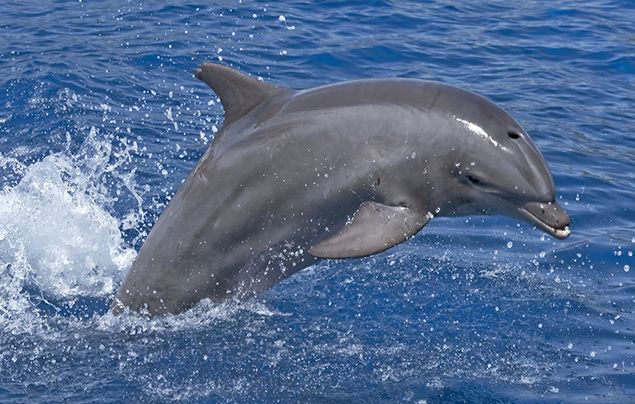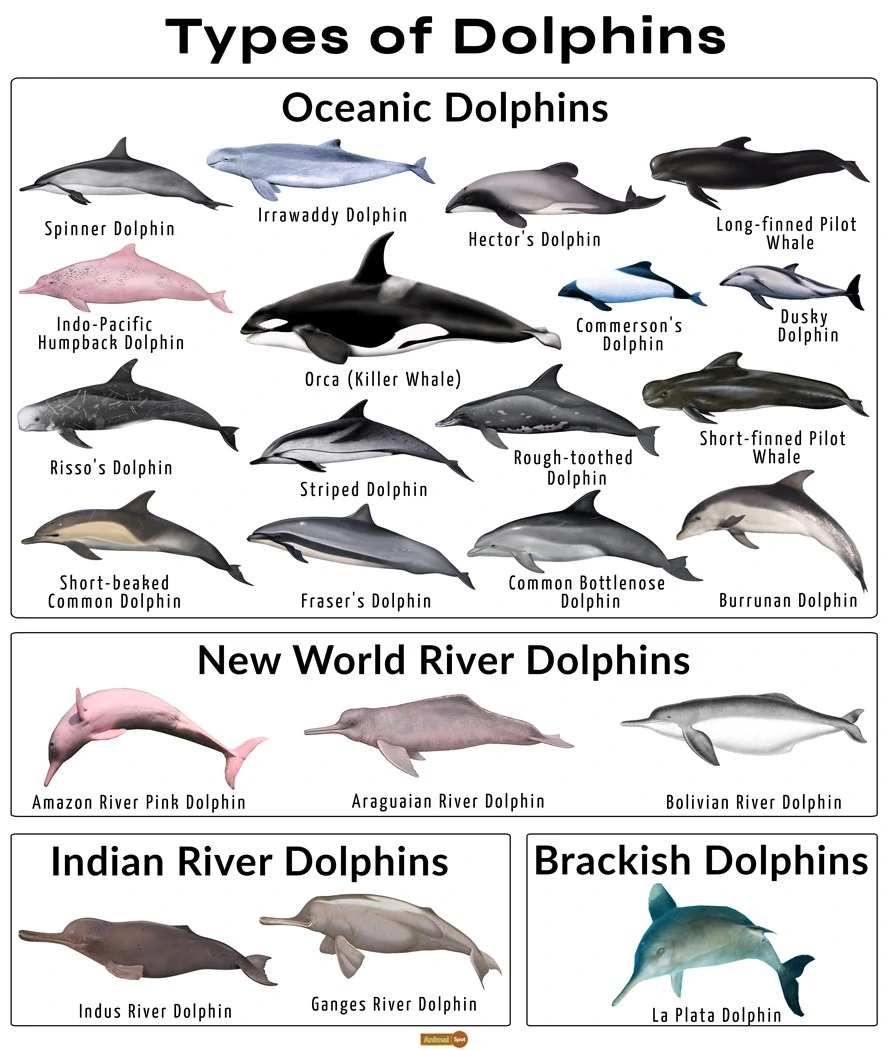Uncover Surprising Dolphin Facts That Highlight Their Playful Nature
Wiki Article
Unveiling Dolphin Information: Nature's Intelligent Marine Mammals
Dolphins, typically considered as among the ocean's most smart inhabitants, exhibit a remarkable range of habits and social structures that require closer exam. With over 40 unique species, these aquatic creatures not just show impressive interaction abilities and facility social communications but additionally have innovative cognitive capacities that test our understanding of non-human knowledge. Dolphin Facts. As we check out the subtleties of their lives, one should take into consideration how these attributes affect their interactions with humans and the pushing importance of preservation. What implications do these understandings hold for our relationship with these phenomenal creatures?Dolphin Types Variety
Dolphins are a varied group of marine animals coming from the household Delphinidae, which incorporates over 40 distinctive species. This household consists of well-known types such as the typical bottlenose dolphin (Tursiops truncatus), the orca or awesome whale (Orcinus orca), and the risso's dolphin (Grampus griseus) Each types exhibits special physical characteristics, habits, and adaptations that allow them to flourish in numerous aquatic atmospheres.
Dolphin species vary substantially in size, varying from the tiny Maui's dolphin (Cephalorhynchus hectori) at around 1.2 meters to the orca, which can get to sizes of up to 9 meters. Their coloration likewise differs, with some species presenting striking patterns that help with camouflage or social signaling. Additionally, dolphins populate diverse environments, from coastal areas and estuaries to the open ocean, showcasing their adaptability.
Study into dolphin varieties diversity highlights the eco-friendly significance of these animals, as they play crucial functions in aquatic ecosystems. Comprehending the numerous types is crucial for conservation initiatives, as many face hazards from habitat contamination, loss, and environment change, necessitating targeted security procedures to guarantee their survival.
Social Structures and Behavior
The complexity of dolphin species is mirrored in their intricate social frameworks and behaviors. Dolphins are known for their highly social nature, commonly creating groups called shells, which can range from a couple of individuals to over a hundred. These husks are typically composed of relative, showcasing a matrilineal structure where ladies play a main role in nurturing and preserving social bonds offspring.
Furthermore, some species of dolphins, such as whales, show complex social behaviors that can include sub-pods or clans with distinctive cultural methods. These social structures are important for the survival and wellness of dolphin populaces, as they facilitate communication, participation, and the transmission of understanding throughout generations. Recognizing these social dynamics is crucial for conservation initiatives and the protection of their all-natural habitats.
Communication Techniques
Among the numerous techniques of communication, dolphins make use of an innovative array of interaction methods that help with social cohesion and coordination within their hulls. These strategies incorporate vocalizations, body language, and echolocation, each serving distinctive functions in their social interactions.Dolphins produce a wide variety of clicks, whistles, and pulsed noises, which serve as their main vocal interaction. Each dolphin has an one-of-a-kind trademark whistle, comparable to a name, that allows people to recognize each other even in big groups. These vocalizations can share numerous messages, such as signaling others to risk or collaborating team activities throughout hunting.
In addition to articulations, body movement plays a vital role in dolphin interaction. Dolphin stances, such as jumping, spinning, and even subtle shifts in alignment, convey moods and intentions. Aggressive display screens may deter opponents, while playful habits can enhance social bonds - Dolphin Facts.
Echolocation, a biological finder system, additional help in navigating and hunting. By discharging acoustic waves and translating the returning echoes, dolphins can locate prey and barriers properly, showing their amazing versatility in intricate marine atmospheres. Collectively, these interaction techniques underscore the elaborate social lives of dolphins, highlighting their knowledge in browsing their underwater world.

Knowledge and Issue Solving
Recognized for their sophisticated interaction abilities, dolphins likewise show remarkable knowledge and analytical capacities that further boost their social communications. Their cognitive abilities are shown by their capacity to discover complex tasks, recognize abstract ideas, and adapt to various ecological difficulties. Study has revealed that dolphins can resolve complex problems, showing not only their cognitive flexibility however likewise their capacity for preparation and foresight.Dolphins frequently take part in cooperative hunting approaches, showcasing their capability to function as a natural unit. This team effort requires advanced analytical abilities, as they should analyze their atmosphere, identify potential victim, and collaborate their actions to achieve a typical goal. In addition, dolphins have been observed utilizing devices, such as marine sponges, to protect their snouts while foraging on the sea floor, more exhibiting their innovative analytic capabilities.

Human-Dolphin Communications
Human-dolphin communications have actually mesmerized fanatics and researchers alike, highlighting the facility partnership in between these smart marine mammals and people. From ancient times, dolphins have been depicted in art and folklore, representing harmony and intelligence (Dolphin Facts). Modern interactions range from clinical study and preservation initiatives to recreational activities like dolphin seeing and swimming with dolphinsStudy has actually shown that dolphins have advanced social frameworks and interaction abilities, which promote their read communications with human beings. These encounters usually cultivate psychological connections, with numerous individuals reporting sensations of delight and empathy during such experiences. It is important to come close to these communications with caution, as human tasks can disrupt dolphin actions and environments.
Conservation efforts significantly focus on advertising liable communications, making certain that human enthusiasm does not compromise dolphin welfare. Education and learning programs intend to increase awareness about the environmental value Get the facts of dolphins, emphasizing the need for lasting practices.
Verdict
In summary, dolphins exhibit remarkable knowledge and flexibility within varied aquatic settings. Proceeded study and awareness are important for cultivating a deeper understanding of dolphins and promoting their welfare in a significantly threatened ecological community.Dolphin species differ significantly in dimension, varying from the small Maui's dolphin (Cephalorhynchus hectori) at around 1.2 meters to the orca, which can reach lengths of up to 9 meters. Dolphins show a range of social communications, consisting of brushing and physical call, which offer to strengthen connections and develop hierarchies.
Identified for their innovative communication skills, dolphins also show amazing knowledge and problem-solving capabilities that even more improve their social interactions. Modern communications range from clinical study and conservation efforts to recreational activities like dolphin look at this site swimming and viewing with dolphins.
Research has actually shown that dolphins possess progressed social structures and communication abilities, which promote their communications with human beings.
Report this wiki page